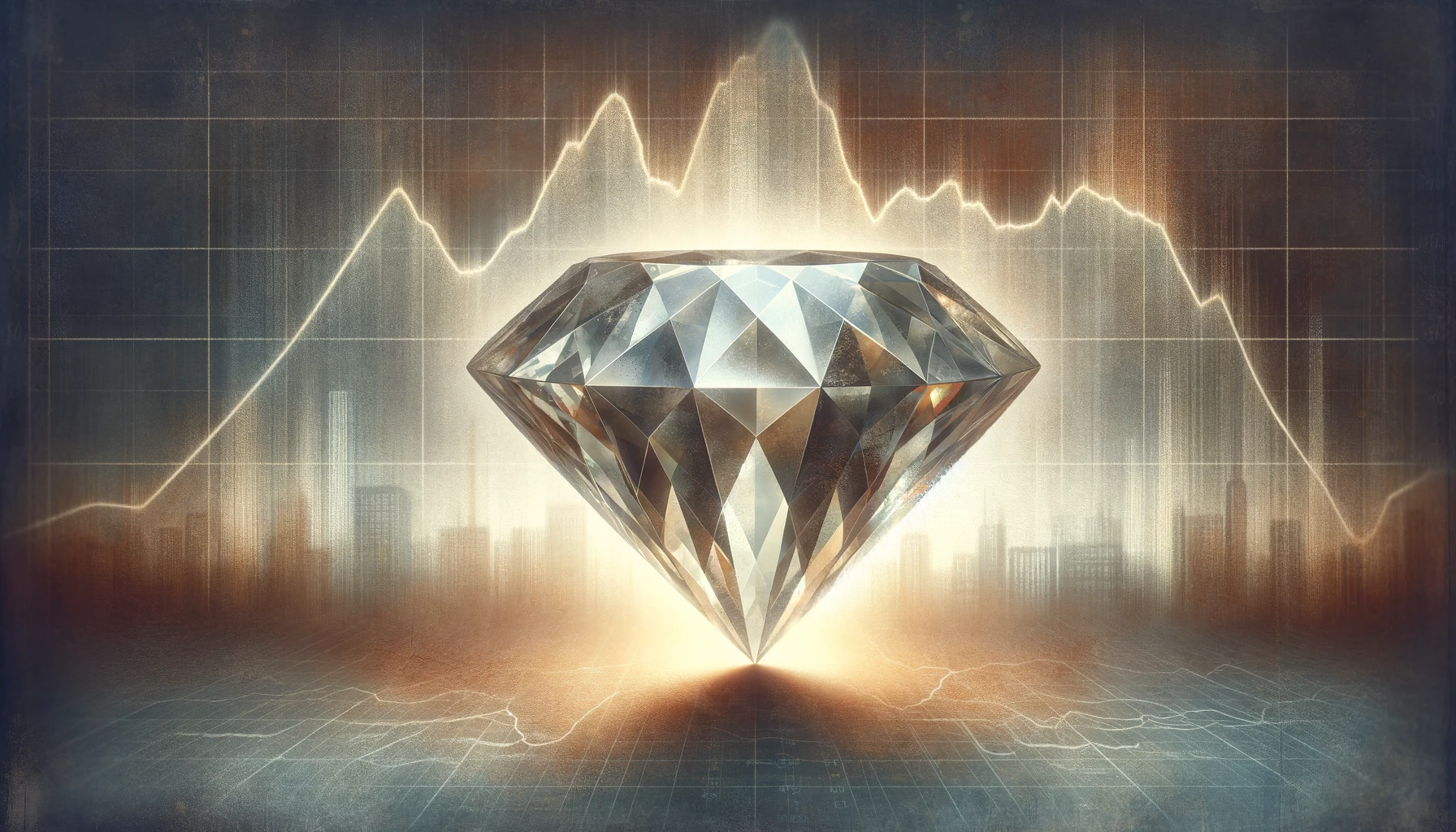Natural Diamonds Aren't Forever: Understanding the Causes Behind Falling Prices and Demand
Diamonds have historically been revered as icons of elegance, prestige, and lasting affection. However, the sheen of natural diamonds is facing challenges like never before.

Diamonds have historically been revered as icons of elegance, prestige, and lasting affection. However, the sheen of natural diamonds is facing challenges like never before. Once considered the ultimate luxury good, their market is witnessing a surprising downtrend in both prices and demand. This article delves into the heart of this sparkling dilemma, exploring why all natural diamonds aren't forever in the economic sense.
Why Are Diamond Prices Falling?
Economic and Market Dynamics: The price of natural diamonds is intricately linked to economic conditions, consumer behaviour, and the supply chain. Recent years have seen fluctuations in global markets, altering the luxury spending habits of consumers. Additionally, the increased production and availability of quality diamonds have led to a market surplus, contributing to the fall in prices.
Rise of Synthetic Diamonds : The advancement and acceptance of lab-grown diamonds pose a significant threat to the natural diamond market. These synthetic alternatives are not only more affordable but also appeal to the environmentally conscious and ethically concerned consumers, thereby diluting the exclusivity and perceived value of natural diamonds.
Shift in Cultural Values: The allure of diamonds as a status symbol is fading among younger generations. Millennials and Gen Z consumers prioritise experiences and sustainability over physical possessions. The traditional appeal of diamonds as a must-have in engagements and luxury collections is being reconsidered, impacting their demand and prices.
What is the Problem with Natural Diamonds?
Environmental and Ethical Concerns: The extraction of natural diamonds has long been associated with environmental degradation and ethical issues, including labour exploitation and conflict funding. These aspects have increasingly come under scrutiny, leading consumers to question the true cost of owning a natural diamond.
Quality and Rarity Misconceptions: The belief that diamonds are incredibly rare and hence valuable is being challenged. With technological advancements in mining and gemology, diamonds are not as scarce as once perceived. Moreover, high-quality synthetic diamonds are clouding the distinction between what is genuinely rare and what is not.
Market Saturation: As large quantities of diamonds enter the market, the uniqueness and value perception of natural diamonds diminish. Consumers now have a wide array of choices, from vintage pieces to synthetic alternatives, making it harder for natural diamonds to maintain their monopolistic allure.
Factors Affecting the Demand for Diamonds
Economic Trends: The global economic health directly influences luxury spending. In times of economic downturn, luxury goods, including diamonds, are often the first to experience a drop in demand.
Consumer Preference : Changing lifestyles and priorities, especially among the younger demographics, significantly impact demand. The increasing desire for ethical consumption and personalized experiences is reshaping the luxury market landscape.
Technological Innovations: The breakthroughs in creating high-quality synthetic diamonds are making them a viable alternative for consumers. The ability to produce larger and more flawless synthetic diamonds at a fraction of the cost is enticing both new and traditional diamond buyers.
Marketing and Perception: The way diamonds are marketed and perceived has a substantial effect on their demand. The industry's response to shifting sentiments and its ability to rebrand or reposition diamonds as desirable objects is crucial in driving or diminishing demand.
Will Natural Diamonds Lose Value?
While it's challenging to predict the future precisely, several indicators suggest that the value of natural diamonds might not hold as steadfastly as in the past. The growing acceptance of synthetic diamonds, along with changing consumer attitudes and economic variables, suggests a continued shift. However, the symbolic and emotional value of natural diamonds, especially in certain cultures and traditions, may sustain their desirability to some extent.
Natural diamonds may find a niche market among collectors and enthusiasts who value the unique history and natural formation of each stone. Additionally, as the industry adapts to demands for ethical sourcing and transparency, there may be a resurgence in appreciation for responsibly mined, natural diamonds.
The landscape of luxury, beauty, and value is ever-changing, and so is the world of diamonds. As we've explored, numerous factors are contributing to the current state of natural diamond prices and demand. From economic shifts to ethical considerations and the rise of synthetic alternatives, the industry is at a crossroads. The future might not sparkle as bright for natural diamonds, but they will undoubtedly continue to have a place in the tapestry of human culture and desire.
For those interested in the current natural diamond price, it's important to stay informed and understand the market's dynamics. Even though diamond prices have decreased, there's still hope. Stay tuned for our next article for more insights. Knowledge and awareness are crucial for any investment or purchase.
Welcome to 'GA Demands'! Check out our current article, "Natural Diamonds Aren't Forever," about the diamond market's challenges. And stay tuned for our next optimistic piece, Navigating the Shifting Sands: Effective Strategies for the Declining Natural Diamond Market Simple, insightful updates from our experts, all here at GA Demands!

